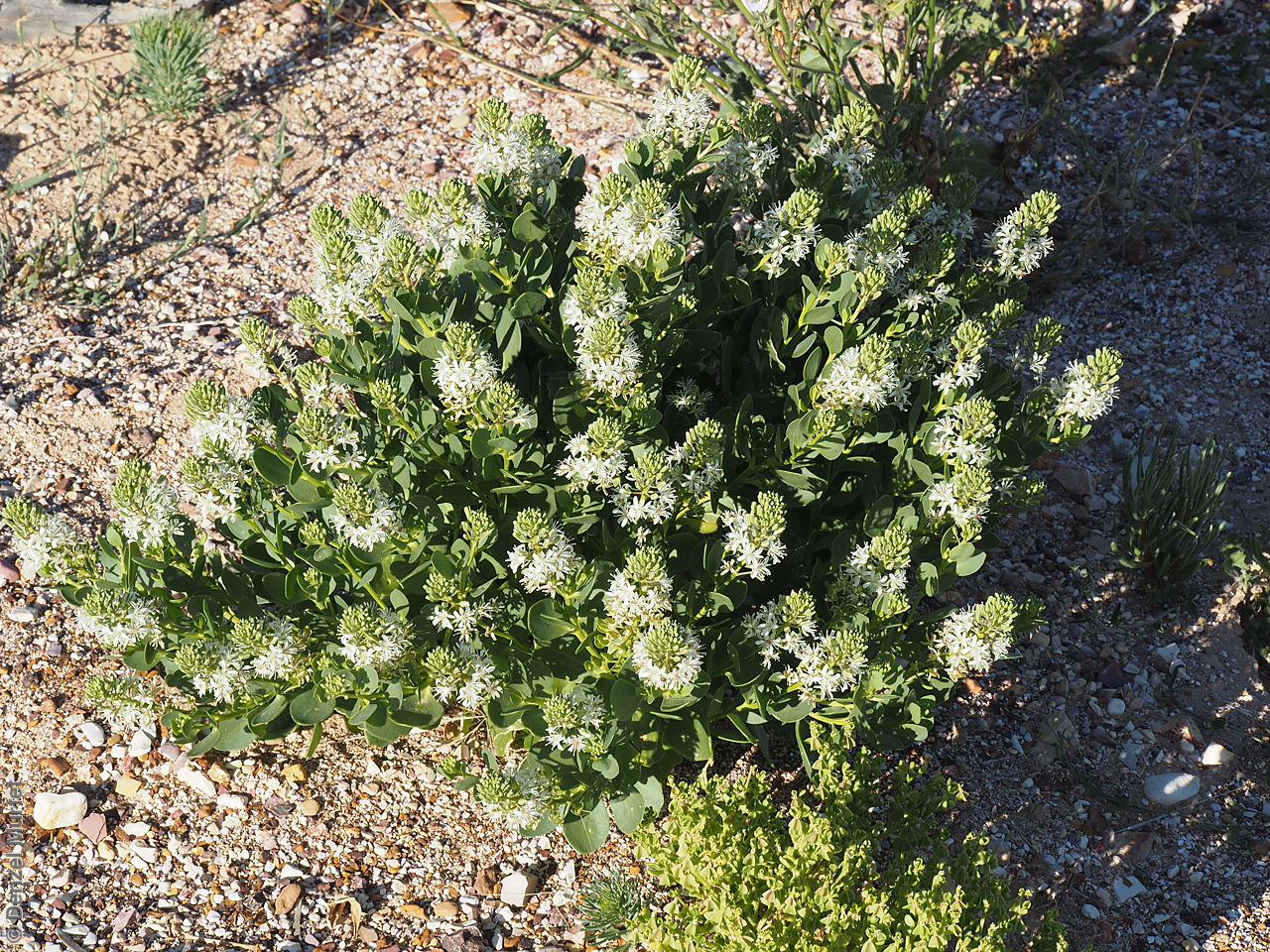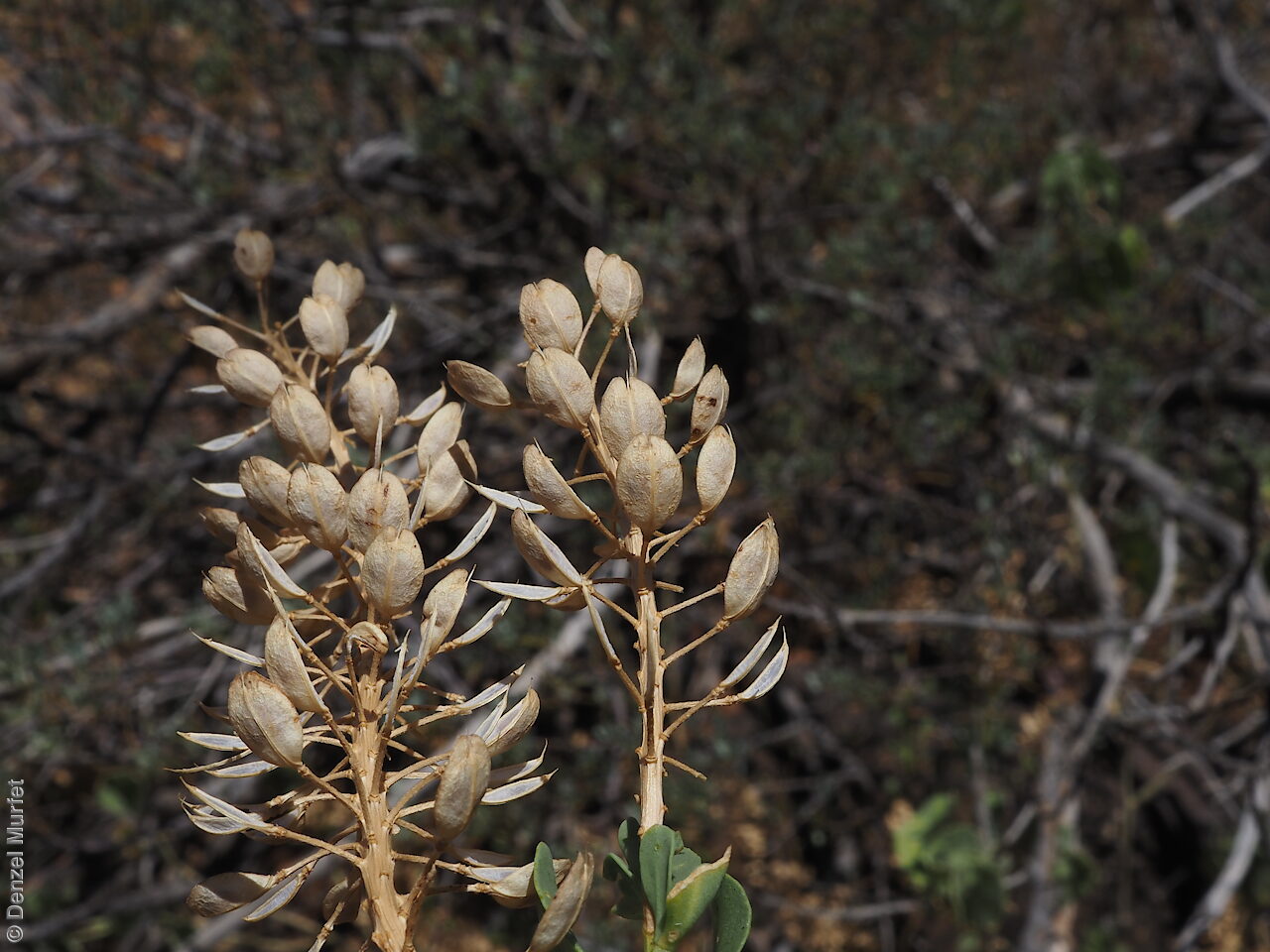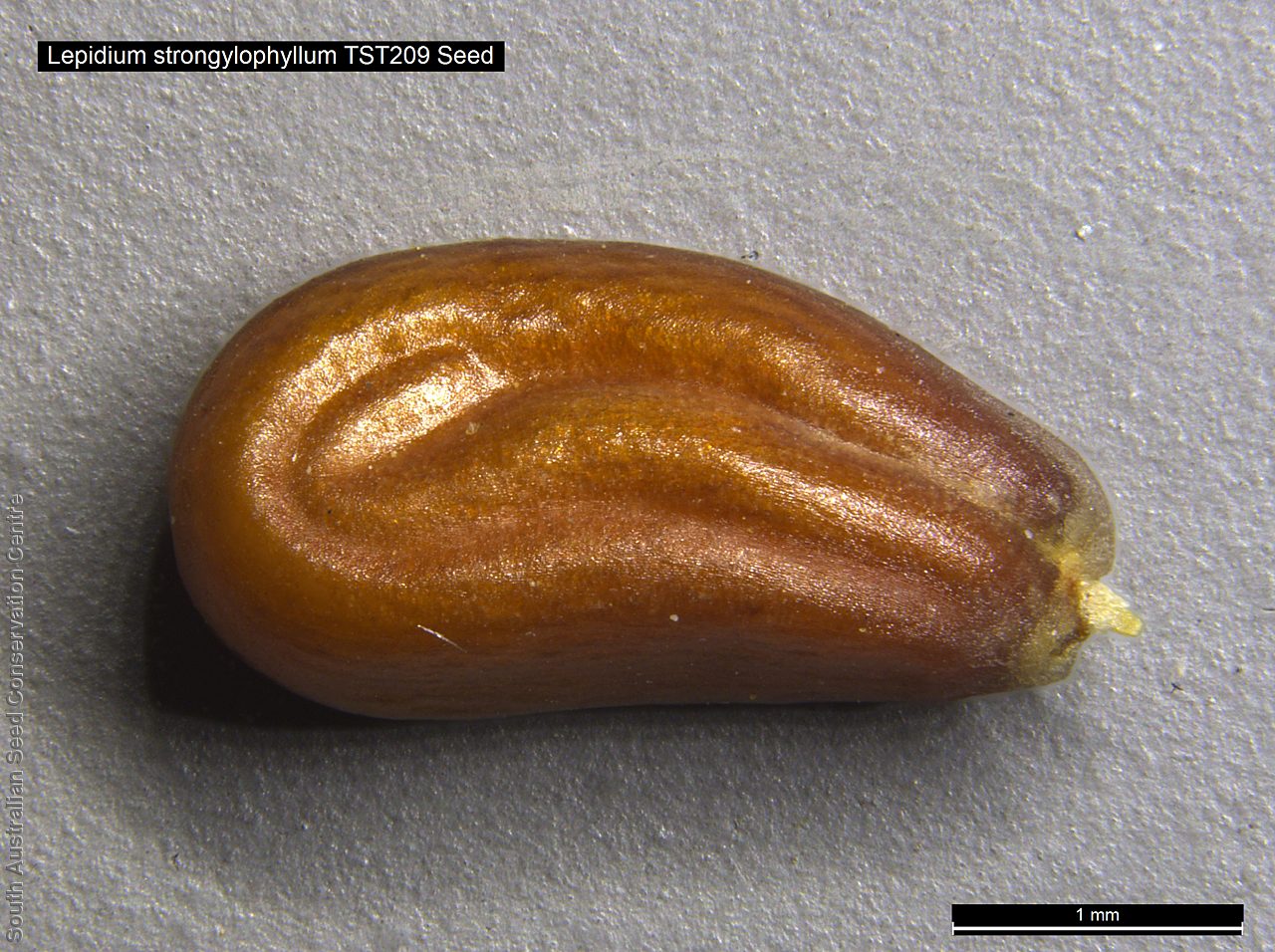

















Botanical art
Prior names
Nasturtium strongyllophyllum
Etymology
Lepidium from the Greek 'lepis' meaning a scale; referring to the appearance of the fruits. Strongylophyllum from the Greek 'strongylos' meaning round and 'phyllon' meaning a leaf; referring to the obovate leaf shape.
Distribution and status
Found scattered in the north-eastern corner of South Australia, growing on rocky plains and slopes. Also found in the Northern Territory and Queensland. Native. Common in South Australia. Uncommon in the Northern Territory. Common in Queensland.
Herbarium regions: Lake Eyre, Flinders Ranges, Eastern
NRM region: South Australian Arid Lands
AVH map: SA distribution map (external link)
Plant description
Erect perennial shrubs to 40 cm tall, glabrous, sometimes glaucous. Leaves obovate, to 30 mm long and 20 mm wide, leathery. Inflorescence an elongating spike with white flowers. Flowering between August and October. Fruits are brown elliptic pod to 7 mm long and 5.5 mm wide, winged in the upper half of the fruit, forming a notch one-sixth of the length of the fruit. Seeds are brown reinform seed to 3.5 mm long and 2 mm wide. Seed embryo type is bent.
Seed collection and propagation
Collect seeds between October and December. Collect maturing pods those turning pale brown with hard seeds inside. Be gentle with the pods as they split open easily. Place the pods in a tray and cover with paper to prevent seeds from popping out and leave to dry for a week. Then rub the dried pods gently by hand to dislodge the seeds. Use a sieve to separate the unwanted material. Store the seeds with a desiccant such as dried silica beads or dry rice, in an air tight container in a cool and dry place. From one collection, the seed viability was high, at 100%.
| Location | No. of seeds (weight grams) | Number of plants | Date collected | Collection number Collection location | Date stored | % Viability | Storage temperature |
|---|---|---|---|---|---|---|---|
| BGA MSB | 12,780 (58.8 g) 12,780 (58.8 g) | 100+ | 25-Oct-2007 | TST209 Lake Eyre | 24-Jun-2020 | 100% | +5°C, -18°C |
| BGA | 820 (3.104 g) | 3 | 4-Nov-2022 | DJD4152 Flinders Ranges | 20-Jun-2023 | 95% | -18°C |
Number of plants: This is the number of plants from which the seeds were collected.
Collection location: The Herbarium of South Australia's region name.
% Viability: Percentage of filled healthy seeds determined by a cut test or x-ray.